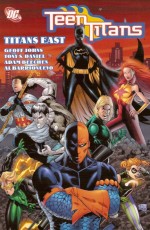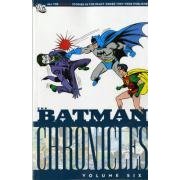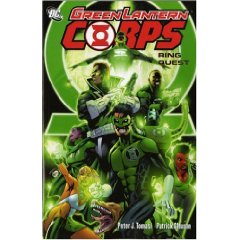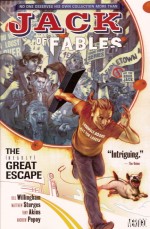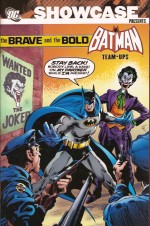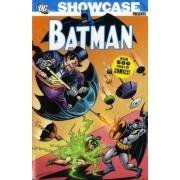
By Gardner Fox, John Broome, Sheldon Moldoff & various (DC Comics)
ISBN13: 978-1-4012-1719-8
After three seasons (perhaps two and a half would be closer) the Batman TV show ended in March, 1968. It had clocked up 120 episodes since the US premiere on January 12, 1966. The era ended but the series had had an undeniable effect on the world, the comics industry and most importantly on the characters and history of its four-colour inspiration. Most notable was a whole new super-heroine who became an integral part of the DC universe.
This astoundingly economical black and white compendium collects all the Batman and Robin yarns from Batman #189-201 and Detective Comics #359-375 (the back-up slot therein being delightfully filled at this time by the whimsically wonderful Elongated Man strip – which I really must get around to reviewing). The 33 stories here – written and illustrated by the cream of editor Julie Schwartz’s elite and extensive stable of creators – slowly evolved over the seventeen months covered here from an even mix of crime, science fiction, mystery, human interest and super-villain vehicles to a much narrower concentration of plot engines. As with the television version, costumes became king, and then became unwelcome….
It all begins with the comic-book premiere of that aforementioned new character. In ‘The Million Dollar Debut of Batgirl’ (Detective Comics #359, cover-dated January 1967) writer Gardner Fox and the art team supreme of Carmine Infantino and Sid Greene introduced Barbara Gordon, mousy librarian and daughter of the venerable Police Commissioner into the superhero limelight. By the time the third season began on September 14, 1967, she was well-established.
A different Batgirl, Betty Kane, niece of the 1950s Batwoman, was already a comics fixture but for reasons far too complex and irrelevant to mention was conveniently forgotten to make room for the new, empowered woman in the fresh tradition of Emma Peel, Honey West and the Girl From U.N.C.L.E. She was pretty hot too, which is always a plus for television…
Whereas she fought the Penguin on the small screen, her paper origin features the no less ludicrous but at least visually forbidding Killer Moth in a clever yarn that still stands up today.
An old foe not seen since the 1940s was revived for Batman #189 (February 1967). Demented psychology lecturer Jonathan Crane was obsessed by the emotion of fear and turned his expertise to criminal endeavours (in World’s Finest Comics #3 and Detective #73) before vanishing into obscurity. With ‘Fright of the Scarecrow’ he was back for (no) good, courtesy of Fox, Sheldon Moldoff and Joe Giella, as this tense psycho-drama elevated him to the top ranking of Bat-rogues. ‘The Case of the Abbreviated Batman’ (Detective #360) by the same team was an old-fashioned crime-caper with mobster Gunshy Barton pitting wits against the Gotham Guardians whilst the March Batman‘s full-length ‘The Penguin Takes a Flyer… Into the Future!’, scripted by John Broome, mixed super-villainy and faux science fiction motifs for an enjoyable if predictable fist-fest.
Editor Schwartz preferred to stick with mysteries and conundrums in Detective Comics and #361’s ‘The Dynamic Duo’s Double-Deathtrap!’ was one of Gardner Fox’s best examples, especially as it’s drawn by the incredibly over-stretched Infantino and Greene. The plot involved Cold War spies and a maker of theatrical paraphernalia; I shall reveal no more to keep you guessing when you read it. The next issue, by Fox, Moldoff and Giella, featured another eccentric scheme by the Riddler on ‘The Night Batman Destroyed Gotham City!’
Batman #191 featured two tales by Broome, Moldoff and Giella staring with ‘The Day Batman Sold Out!’, a “Hero Quits” teaser with a Babs Gordon cameo, whilst the faithful butler took centre-stage in the charming ‘Alfred’s Mystery Menu’. ‘The True-False Face of Batman’ however, (Detective #363, by Fox Infantino and Greene) was a full co-starring vehicle as the new girl was challenged to deduce Batman’s secret identity whilst tracking down the enigmatic Mr. Brains.
Fox scripted both ‘The Crystal Ball that Betrayed Batman!’ which featured an old enemy in a new guise and the Robin solo-story ‘Dick Grayson’s Secret Guardian!’ in Batman #192, for Moldoff and Giella who also handled his mystery-yarn ‘The Curious Case of the Crime-less Clues!’ in Detective #364, in which Riddler and a host of Bat-baddies again tested the brains and patience of the Dynamic Duo – or so it seemed….
Issue #365 featured ‘The House the Joker Built!’ by Broome, Moldoff and Giella which was nobody’s finest hour, but ‘The Blockbuster goes Bat-Mad!’, scripted by Fox for Batman #196, is a compensating delight, especially when accompanied by another “fair-play” mystery yarn starring The Mystery Analysts of Gotham City. ‘The Problem of the Proxy Paintings!’ is the kind of Batman tale I miss most these days: witty and urbane, a genuinely engaging puzzle without benefit of angst or histrionics.
‘The Round Robin Death Threats’ by Fox, Infantino and Greene was a tense thriller that stretched across two issues of Detective (#366 and #367 – an almost unheard of event in those reader-friendly days), a diabolical murder-plot that threatened to destroy Gotham’s worthiest citizens. The drama ended in high style with ‘Where There’s a Will… There’s a Slay!’ a chilling conclusion almost ruined by that awful title.
‘The Spark-Spangled See-Through Man!’ in Batman #195 introduced the radioactive villain Bag o’ Bones in a desperate attempt to get back to story-driven tales, though the ‘7 Wonder Crimes of Gotham City!’ (Detective #368) by the same creative team of Fox, Moldoff and Giella was a much more enjoyable taste of bygone times. Issue #196 led with a clever puzzler entitled ‘The Psychic Super-Sleuth!’ and finished well with another challenging mystery in ‘The Purloined Parchment Puzzle!’ (both by Fox, Moldoff and Giella) and Detective #369, illustrated by Infantino and Greene, somewhat reinforced boyhood prejudices about icky girls in the classy thriller ‘Batgirl Breaks Up the Dynamic Duo’ which segued directly into a classic confrontation in Batman #197 as ‘Catwoman sets Her Claws for Batman!’ by Fox, Frank Springer and Greene. This frankly daft tale is most fondly remembered for the classic cover of Batgirl and Catwoman (with Whip!!!) squaring off over Batman’s prone body – comic fans have a psychopathology all their very own…
Detective Comics #370 was by Broome, Moldoff and Giella, and related a superb thriller with roots in Bruce Wayne’s troubled youth. ‘The Nemesis from Batman’s Boyhood!’ was in many ways a precursor of later tales with an excellent premise and a soundly satisfying conclusion which proved that the needs of the TV shows were not exclusive or paramount. Gil Kane made his debut on the Dominoed Daredoll (did they really call her that? – yes they did, from page 2 onwards!) in #371’s ‘Batgirl’s Costumed Cut-ups’, a masterpiece of comic dynamism that Sid Greene could be proud of but Gardner Fox probably preferred to forget.
Batman #199’s ‘Peril of the Poison Rings’ and ‘Seven Steps to Save Face’ are much better examples of the clever plotting, memorable maguffins and rapid pace that Fox was capable of, ably interpreted by Moldoff and Giella, whilst John Broome’s ‘The Fearsome Foot-Fighters!’ weak title masked a classy burglary-yarn and the regular art team began adding mood and heavy shadow to their endeavours. This issue (Detective #370) was the first Bat-cover that legend-in-waiting Neal Adams pencilled and inked – a welcome taste of things to come…
Batman #200 (cover-dated March 196b) was written by wunderkind Mike Friedrich for Moldoff and Giella. ‘The Man Who Radiated Fear!’ featured the revitalised Scarecrow, and with the TV show dying the pre-emptive rehabilitation of the Caped Crusader began right here in a solid thriller with few laughs and lots of guest-stars.
Fox returned to top form in Detective #373, with art by Chic Stone and Greene in a tale which favoured drama over shtick in ‘Mr. Freeze’s Chilling Deathtrap!’, whilst Gil Kane returned to ramp up the tension in the brutal vengeance fable ‘Hunt for a Robin-Killer!’ (Detective #374) and Stone and Giella coped well with the extended cast of villains in Batman #201’s ‘Batman’s Gangland Guardians!’, a brilliant action-packed enigma wherein his greatest foes become bodyguards to a hero…
This volume ends with Detective #374 and Fox, Stone and Greene’s ‘The Frigid Finger of Fate’ a chilling race to catch a precognitive sniper, which more than any other story signaled the end of the Camp-Craze Caped Crimebuster and heralded the imminent return of a Dark Knight.
With this third collection from “the TV years” of Batman, concluding by the Spring of 1968, the global Bat-craze and larger popular fascination with super-heroes – and indeed the whole “Camp” trend – was beginning to die. In comics, that resulted in the resurgence of other genres, particularly Westerns and supernatural tales. With Batman it meant a renaissance of passion, terror and a life in the shadows.
Stay tuned: the best is yet to come…
© 1967, 1968, 2008 DC Comics. All Rights Reserved.



